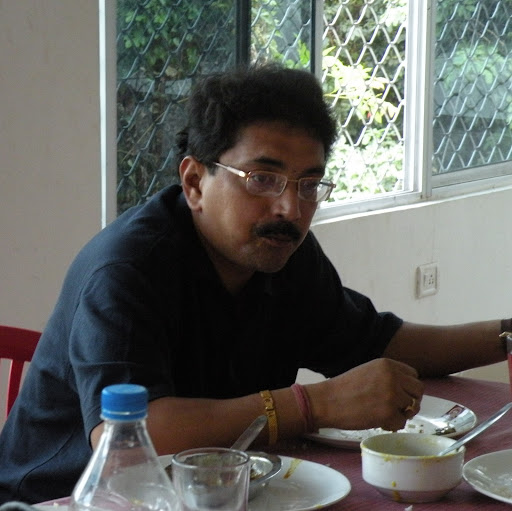Sumit Dasgupta
age ~80
from Horseshoe Bay, TX
- Also known as:
-
- Sumit Dassgupta
- Sumit Dasgupt
- Sumit O
Sumit Dasgupta Phones & Addresses
- Horseshoe Bay, TX
- 35 Saddle Ridge Dr, Hopewell Junction, NY 12533
- Hopewell Jct, NY
- Albuquerque, NM
- 8900 Bluegrass Dr, Austin, TX 78759 • 5123490403
- Wappingers Falls, NY
- Cottonwd Shrs, TX
- 8900 Bluegrass Dr, Austin, TX 78759 • 5124154746
Work
-
Position:Professional/Technical
Education
-
Degree:Graduate or professional degree
Emails
Name / Title
Company / Classification
Phones & Addresses
Director
INDIAN AMERICAN COALITION OF TEXAS
8900 Bluegrass Dr, Austin, TX 78759
PO Box 204224, Austin, TX 78720
PO Box 204224, Austin, TX 78720
Vice-President
NETWORK OF ASIAN AMERICAN ORGANIZATIONS, AUSTIN, T
Provides Community and Public Services to Asian Americans In The Greater Austin Area
Provides Community and Public Services to Asian Americans In The Greater Austin Area
10901 N Lamar Blvd STE B206, Austin, TX 78753
7908 Cameron Rd, Austin, TX 78754
7908 Cameron Rd, Austin, TX 78754
Director
"CENTRAL TEXAS BENGALI ASSOCIATION"
Membership Organization
Membership Organization
3814 Azur Ln, Round Rock, TX 78681
Director
SUDEB PROPERTIES, INC
Nonresidential Building Operator
Nonresidential Building Operator
8900 Bluegrass Dr, Austin, TX 78759
Director, Secretary, Senior Vice-Presiden
Silicon Integration Initiative, Inc
Us Patents
-
Interrupt Mechanism For Multiprocessing System Having A Plurality Of Interrupt Lines In Both A Global Bus And Cell Buses
view source -
US Patent:47363193, Apr 5, 1988
-
Filed:May 15, 1985
-
Appl. No.:6/734304
-
Inventors:Sumit DasGupta - Wappingers Falls NY
John M. Hancock - Poughkeepsie NY
James H. Kukula - Poughkeepsie NY
Roger E. Peo - Poughkeepsie NY -
Assignee:International Business Machines Corp. - Armonk NY
-
International Classification:G06F 1324
-
US Classification:364200
-
Abstract:A multiprocessing system has a plurality of processors each having a unique interrupt. An executive processor issues interrupt requests over a global bus having a plurality of interrupt lines. A plurality of bus interface systems are each connected to a different interrupt line in the global bus and to a cell bus. A master cell processor and a plurality of slave cell processors are connected to different interrupt lines in the cell bus. All interrupt requests to a cell go first to the master cell processor and then to a slave processor as appropriate.
-
Complete Chip I/O Test Through Low Contact Testing Using Enhanced Boundary Scan
view source -
US Patent:57870985, Jul 28, 1998
-
Filed:Jul 29, 1996
-
Appl. No.:8/688067
-
Inventors:Sumit DasGupta - Austin TX
Kris Venkatraman Srikrishnan - Wappingers Falls NY
Ronald Gene Walther - Austin TX -
Assignee:International Business Machines Corporation - Armonk NY
-
International Classification:G01R 3128
-
US Classification:371 223
-
Abstract:A system and method for evaluating solder ball connections to a flip-chip or the like integrated circuit device through an extension of boundary scan testing circuits and techniques. The existence, size, and connective efficacy of solder balls deposited on pads are indirectly verified through the inclusion of a boundary scan driver and receiver with each pad. The respective drivers and receivers are connected to the complementing sections of a segmented pad metallurgy. The formation of a correct size solder ball connects the driver and receiver to allow boundary scan verification of all the electrical connections in the path. Thereby, low contact testing can be used to verify the integrity of the integrated circuit as well as any solder ball type die (chip) output contacts.
-
Level Sensitive Scan Design (Lssd) System
view source -
US Patent:42939194, Oct 6, 1981
-
Filed:Aug 13, 1979
-
Appl. No.:6/066130
-
Inventors:Sumit Dasgupta - Wappingers Falls NY
Prabhakar Goel - Poughkeepsie NY
Thomas W. Williams - Longmont CO -
Assignee:International Business Machines Corporation - Armonk NY
-
International Classification:G06F 748
G06F 1100
H03K 2330 -
US Classification:364716
-
Abstract:One of the significant features of the invention, as in U. S. Pat. No. 3,783,254, is the implementation of shift register latches as basic building blocks in a logic organization and system with combinational logic networks which provide the excitation for the shift register latches. These shift register latches in the invention as well as in the patent contain a pair of latches where one is a "master" latch and another a "slave". The structure in the patent requires the "master" and "slave" latches to be part of the shift register for scan-in/scan-out. However, only the "master" may be set with data from the logic system surrounding it while the "slave" may only be set with data which previously resided in the related "master" latch. Thus, in those logic organizations where only the "master" latch output is required, the usefulness of the "slave" latch is limited to scan-in/scan-out. In the shift register latch of the invention, the "slave" latch must be set with the data that resided in the related "master" latch during scan-in/scan-out.
-
High Speed Binary Counter
view source -
US Patent:44083360, Oct 4, 1983
-
Filed:May 4, 1981
-
Appl. No.:6/259878
-
Inventors:Sumit DasGupta - Wappingers Falls NY
-
Assignee:International Business Machines Corp. - Armonk NY
-
International Classification:H03K 2308
-
US Classification:377 34
-
Abstract:A plurality of two stage Gray code counters are connected in series to generate a multiple bit pseudo Gray code count C. sub. 0, C. sub. 1,. . . , C. sub. 7. A binary count B. sub. 0, B. sub. 1,. . . , B. sub. 7 is then generated by using the odd subscripted bits C. sub. 1, C. sub. 3, C. sub. 5, C. sub. 7 of the pseudo Gray code as the binary count bits B. sub. 1, B. sub. 3, B. sub. 5, B. sub. 7 and generating the even subscripted bits of the binary count B. sub. 0, B. sub. 2, B. sub. 4, B. sub. 6 by Exclusive ORing the odd and even position counts of each two stage Gray code counter together in Exclusive OR circuits.
-
Method Of Concurrently Testing Each Of A Plurality Of Interconnected Integrated Circuit Chips
view source -
US Patent:45090084, Apr 2, 1985
-
Filed:Apr 10, 1984
-
Appl. No.:6/598638
-
Inventors:Sumit DasGupta - Wappingers Falls NY
Matthew C. Graf - Highland NY
Robert A. Rasmussen - LaGrangeville NY
Thomas W. Williams - Boulder CO -
Assignee:International Business Machines Corporation - Armonk NY
-
International Classification:G01R 3128
-
US Classification:324 73R
-
Abstract:Disclosed is a design discipline, or approach, in the form of circuitry and a test method, or methodology which obviates the problems of the prior art and allows testing of each individual chip and interchip connections of a plurality of interconnected chips contained on or within a high density packaging structure. This testing is accomplished without the need for and utilization of test equipment having a precision probe and a high precision step and repeat mechanism. CPA is a method and circuit design discipline that, where followed, will result in a testable multichip package given that each logical component is testable and the design is synchronous in nature. The CPA discipline is able to accomplish this by making use of shift register latches on the chips or functional island periphery. These latches are used to indirectly observe and/or control the synchronous network, in many ways replicating the stuckfault test environment under which tests were generated at the lower subcomponent level of assembly. One method, full CPA, offers the ability to apply these tests to all full CPA chips on the multichip package simultaneously or in unison, thus reducing manufacturing tester time.
-
Chip Partitioning Aid (Cpa)-A Structure For Test Pattern Generation For Large Logic Networks
view source -
US Patent:45033862, Mar 5, 1985
-
Filed:Apr 20, 1982
-
Appl. No.:6/370214
-
Inventors:Sumit DasGupta - Wappingers Falls NY
Matthew C. Graf - Highland NY
Robert A. Rasmussen - LaGrangeville NY
Thomas W. Williams - Boulder CO -
Assignee:International Business Machines Corporation - Armonk NY
-
International Classification:G01R 3128
-
US Classification:324 73R
-
Abstract:Disclosed is a design discipline, or approach, in the form of circuitry and a test method, or methodology which obviates the problems of the prior art and allows testing of each individual chip and interchip connections of a plurality of interconnected chips contained on or within a high density packaging structure. This testing is accomplished without the need for and utilization of test equipment having a precision probe and a high precision step and repeat mechanism. CPA is a method and circuit design discipline that, where followed, will result in a testable multichip package given that each logical component is testable and the design is synchronous in nature. The CPA discipline is able to accomplish this by making use of shift register latches on the chips or functional island periphery. These latches are used to indirectly observe and/or control the synchronous network, in many ways replicating the stuckfault test environment under which tests were generated at the lower subcomponent level of assembly. One method, full CPA, offers the ability to apply these tests to all full CPA chips on the multichip package simultaneously or in unison, thus reducing manufacturing tester time.
Classmates

Sumit Dasgupta
view sourceSchools:
South Point School Calcutta India 1979-1995
Community:
Sanjay Grover

Nava Nalanda High School,...
view sourceGraduates:
Sumit Dasgupta (1989-1993),
Siddhartha Roy (1994-1998),
Shovan Ghosh (1993-1997),
Raja Roy Chowdhury (2003-2007)
Siddhartha Roy (1994-1998),
Shovan Ghosh (1993-1997),
Raja Roy Chowdhury (2003-2007)
Googleplus

Sumit Dasgupta

Sumit Dasgupta

Sumit Dasgupta

Sumit Dasgupta

Sumit Dasgupta

Sumit Dasgupta

Sumit Dasgupta

Sumit Dasgupta
Myspace
Youtube
Plaxo

Sumit DasGupta
view sourceSr. Vice President, Engineering at Silicon Integra...

Sumit Dasgupta
view source
Sumit Dasgupta
view source
Sumit Dasgupta
view source
Sumit DasGupta
view source
Sumit Kumar Dasgupta
view source
Sumit Kumar Dasgupta
view source
Sumit Dasgupta
view source
Sumit Dasgupta
view sourceGet Report for Sumit Dasgupta from Horseshoe Bay, TX, age ~80






